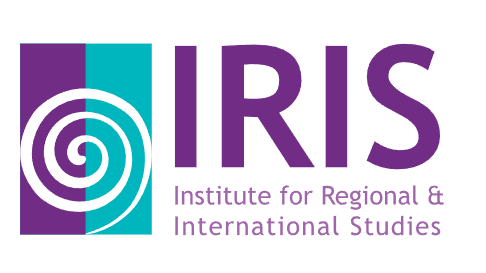Key Points:
– The impact of the Climate Crisis can become so severe that many areas within the region can become uninhabitable, with temperatures potentially exceeding 60˚C and ‘wet bulb temperatures’ preventing areas from being suitable for human life.
– Areas in the region will experience more frequent and severe droughts, water shortages, and less rainfall. While in other areas, especially North Africa’s Sahel, extreme rainfall will become more common, flooding the arid lands.
– Other extreme weather phenomenons can occur, such as cyclones that will be able to persist deeper into the Arabian Peninsula and cause landfalls, damage to infrastructure, and displace populations.
Introduction
The Middle East is heating twice as fast as the rest of the world, and it is poised to be one of the worst recipients of the impact the Climate Crisis has to offer to humanity. In the optimistic scenario, temperatures in the region can exceed 45˚C for over three months per year if greenhouse gasses start to wane, but in a business as usual’ scenario, the Mideast will face over 200 days of scorching average temperatures of over 50˚C.[1] The Intergovernmental Panel on Climate Crisis’s (IPCC) Sixth Assessment Report, released in 2021, states that the combined influence of human and natural factors influencing the climate results in a 1˚C increase as opposed to only natural factors; meaning the sea levels rise faster, there will be a more aggressive cyclonic activity or rainfalls and more severe droughts.[2] The report also states that every instance of rising global temperatures will aggravate all meteorological events, and Earth’s natural carbon sinks cannot cope with this increase.[3] It will have a direct impact on the region’s standard of living, compromising the ability to secure food and water, and even disrupt the economic activity for some states. The scope of this essay’s analysis will be focused on two topics: the rise in extreme temperatures and the impact this has on water supplies. In both topics, Mideast faces incredibly difficult challenges that, if left unmitigated, can cause damage of catastrophic proportions to hundreds of millions of people; including a crippled agricultural capacity due to extreme droughts, extensive infrastructure damage to power grids that can lead to blackouts as a result of heatwaves, and more.
Extreme Temperatures
The number of days that have an average of 46˚C is set to increase tenfold in less than 30 years and can threaten the habitability of the whole Gulf by 2100.[4] To put this into perspective, humans may not cope with the extreme heat as the body was not meant to endure beyond high temperatures of 35˚C in areas with high humidity (the so called “wet bulb temperature”); potentially leading to widespread health issues originating from more intense heatwaves and displacement.[5]The signs supporting these assertions have been happening for many years and they are pushing to break all-time temperature records. In Kuwait, temperatures hit just over 53˚C, marking it the hottest on Earth for 2021.[6] Iraq’s 50˚C in the same year have damaged the power grids and resulted in blackouts, pushing people to protest as the lack of electricity greatly limits the Iraqi’s ability to fight the heat due to air conditioners not working.[7] Iran is estimated to see a 2.6˚C increase in the average temperature and 35% less precipitation, paving the way for more droughts and less water.[8] Iran has already faced protests over access for water and electricity in the past, and the Climate Crisis will only aggravate these in the future as rivers and lakes dry up.[9]
Rising temperatures can cause a negative domino effect that can disrupt not only the infrastructure of a country or the wellbeing of a society; it can also cause serious economic disruption, bolster conflict and poverty, as well as indirectly amplify social inequality and conditions for political unrest.
Firstly, such temperatures have a direct impact on the agricultural output of an economy and ensure food security. The impact is two-pronged: it affects both the ability to grow specific crops that are less resistant to heat, as well as drying up the access to freshwater (either obtained through natural means such as rainfall or through irrigation). While the importance of agriculture can be understood at a basic level – providing food for others – a deeper examination of the knock-off effects impacts on food supply can have is required. Agriculture is a pillar in the economy of many Middle Eastern states, including those which face periods of conflict. They can employ large parts of their working force and can act as economic lifelines. In Syria, this industry contributed to at least a quarter of its gross domestic product and 25% of the labour force before the civil war.[10] However, an intense, 3-year drought between 2007 and 2010 has led to many farmers losing crops (in some cases, national production of wheat diminishing to 55%) and forcing over 1.5 million people to move to urban centres to provide for their families.[11] This deepened the social inequality and discrepancy between those living in the urban area and those arriving from rural households, resulting in increased volatility that foreshadowed the civil war.[12] The government’s response was overwhelmed in the face of this drought due to the fact that much of the groundwater was already being used and funding was limited, resulting in insufficient support.[13] This had direct effects on the economy, with agriculture producing far less compared to previous years and thus having less export revenue. Furthermore, many families saw their livelihoods ruined by this drought as the farming lifestyle became untenable in the face of the extreme heat. Given that temperatures are rising, it is worth examining the case of Syria as one of the many examples where the Climate Crisis can directly affect the living conditions of the people established there.
A scientific report featuring the Decision Support System for Agrotechnology Transfer (DSSAT) model based on Jordan’s Yarmouk basin backs the assessment that the Climate Crisis will impact the farming ability of countries. The report states how in almost every scenario where Earth heats by 1˚C to 4˚C, barley growth will respectively decrease from -14% to -46%, especially in conditions where rainfall decreases anywhere between -10% to -20%.[14] This is due to surface temperatures rising and affecting the amount of rain available, thus recommending that different, more heat-resistant crops should be planted instead.[15] Furthermore, increase in temperatures can accelerate desertification and increase the aridity of the land, making dust storms more common.[16]
As stated earlier, extreme heats also have a direct impact on the health of humans. This is most easily exemplified through the increasing frequency of heatwaves, which will bolster heat stress, decrease productivity and proliferate cases of various diseases, including cerebrovascular disease, heart diseases, and other food or insect-borne disease such as malaria.[17] They can also endanger human lives and increase mortality rate, especially in vulnerable or older demographics.[18] In 2021, there was a 74% increase in deaths originating from heatwaves in the Middle East between 1990 to 2016.[19] Due to increased heat-related diseases or afflictions, these can lead to increasing the strain on health services and, depending on the scale of the situation, may be forced to triage or allocate resources from other operations to deal with the increase in those struck by such heatwaves.
A Relentless Dichotomy: Water Shortages and Extreme Rainfall
Another equally important climate-related impact in MENA is the lack of access to water and its decreasing supplies, as well as, perhaps in a twist of irony, extreme rainfall that can lead to a flood. A disturbance in the supply of water can affect not only the food security and livelihoods of many communities,[20] but also raise tensions between organisations and governments on how water should be managed both internally and between other parties.[21]
At its simplest, higher temperatures will result in a decreasing trend in access to water. It is due to surface temperatures rising and leading to more evaporation of rivers or lakes. A few examples include Lake Urmia, once the biggest salt water lake in Iran. The lake, which was once a key touristic attraction and an important source of water, has shrunk from 4,986 square kilometres to 2,240 between the year 2000 to 2017.[22] The motivations behind this shrinkage are debated in the scientific community, but the two main arguments are that the Climate Crisis is a major factor and that there is a water mismanagement problem, with the lake being at serious risk from disappearing completely.[23],[24] However, water mismanagement is an issue that can be connected to the Climate Crisis in itself, where more water needs to be extracted from underneath the surface or directed from other rivers for the purposes of hydroelectricity or irrigation. Consequently, the livelihood of many people living near the lake has been severely impacted, with generational farmers becoming unable to continue their practice due to the proportional increase in the salinity of the water.[25] Rivers Tigris and Euphrates, two major rivers that supply 98% of the water in Iraq and a major source of electricity and conflict due to the dams in the area, are bound to run completely dry in less than 2 decades due to intense droughts.[26] The foreshadowing effects these droughts have had can seen in recent years has led to over 20,000 Iraqis displaced in 2019 alone and exacerbated access to water, food, electricity and more.[27] As an extension to these droughts and temperatures, precipitation will also decrease in many parts of the Middle East, at least in part due to less evapotranspiration: the process of evaporated water returning as rainfall; this forces a rethinking of water and energy budgeting that can lead to further reliance on groundwater, which is being extracted and draining.[28]
In contrast, there will also be instances in MENA where there can be extreme rainfall that can lead to flash floods, landfalls and the destruction of infrastructure and crops. In the Mideast, Cyclone Shaheen is an example of an extreme event that has amplified effects due to the Climate Crisis. While cyclones are not a rare occurrence due to the high surface temperatures and high humidity, Shaheen is considered rare due to the landslides, floods and winds at over 112km/hr that hit Oman for almost $520 million in damages.[29] Moreover, its uniqueness lies in its persistence moving forward into the Arabian Peninsula, making this cyclone the first one since the 1890s; the frequency of these is most likely to increase due to higher temperatures.[30] The coastal archeology of the region will also face increased rainfall and storm activity in the following years,[31] while rising sea levels are threatening cities like Egypt’s Alexandria by disappearing under the water if the world heats up by 4˚C.[32] In North Africa, the increasing temperatures in Sahara will correlate with more rainfall in the Sahel region.[33] While this can mean that the Sahel may be prone to less aridity and increase its liveability,[34] extreme rainfall, landslides and flash floods in this region and the Horn of Africa will occur more frequently as a result of the meteorological change, thus damaging the food infrastructure.[35] Higher temperatures and increased rainfall will also mean higher humidity in the air, where on top of there being a risk of ‘wet bulb temperatures’ being too high,[36] it will be a suitable environment for (especially insect-borne) diseases such as malaria to spread more proactively, adding to the food and economic security dynamic a deepening vector of the health one.[37]
Conclusion
The Climate Crisis is affecting all the regions in the world. However, the Middle East and North Africa are bound to pay the highest price for the increasing heat and the domino effect this will have. The heat will bring many difficulties in ensuring the quality of life and to the liveability in the region, ranging from temperatures that can exceed 50˚C at a regular basis, more frequent heatwaves that can affect the health of millions of people, damaged infrastructure, and extensive droughts will cause severe damage to agriculture and the food security tied to it; deepening socio-economic and poverty-related grievances. On the other end of the spectrum, the increase in heat will result in various natural disasters including stronger cyclones that will damage infrastructure, cause landfalls and loss of life, as well as widespread economic repercussions. Furthermore, various regions will face an increase in heavy rainfall, of whose excessive amounts of water can cause floods in areas with arid lands, further diminishing the ability of farmers to grow crops and countries to provide for their population. The effects the Climate Crisis will have in the region are too comprehensive to be approached by a single, however, the fact this is now an unstoppable phenomenon should be a long-awaited wake-up call for the world to face this challenge and mitigate its consequences before millions of people face a scorching fate that they will have no choice but to flee leaving everything behind or perish in it.
Recommendations
– The Middle East is one of the biggest producers of oil, and many regional countries rely on the riches made from its extraction to sustain their economies and lifestyle. Thus, to minimise the emissions made by providing this oil and through its extraction or consumption, one must address the motivations that maintain the extraction of this resource. One must look into possible political and economic incentives to promote a departure from oil, including the promotion of green energy technology on the global market as a profitable and future-proof alternative to oil. Those MENA countries which face conflict and rely on oil money for reconstruction should be provided with aid to compensate.
– Cyclone Shaheen has proven that natural disasters are becoming more extensive in both intensity and damage, raising the need to construct sturdier infrastructure meant to mitigate the effects such phenomenon have. Rising sea levels also pose a serious threat to coastal cities. Thus, MENA’s coastal states should further invest in more disaster mitigation infrastructure and means to address the rising sea levels to prevent further damage. Other MENA countries, whose economies are not as developed or face conflict, should be provided with the aid required to build sturdier infrastructure oriented at providing resilience against such events.
– Agriculture must adapt to the increasing heat levels by growing crops that have more resistance to higher temperatures to safeguard food security and protect the livelihoods of farmers.
– Better water management systems and agreements, at both national and regional levels, must occur in order to secure the water supplies in the face of higher rates of evaporation and lesser rainfall. A decrease in the number of dam projects, and shifting from hydroelectric to solar energy, will be a good first step to addressing these issues as it will limit the strain of water consumption.
Bibliography
Akkad R., et. al., “Beyond human endurance”, The Washington Post, 28 July 2021, Available at: https://www.washingtonpost.com/world/interactive/2021/climate-change-humidity/
Al-Bakri J., et al., (2011) “Potential impact of climate change on rainfed agriculture of a semi-arid basin in Jordan”, Physics and Chemestry of the Earth, 36:5, Available at: https://doi.org/10.1016/j.pce.2010.06.001
Ajjur B. S., Al-Ghamdi S., (2021) “Evapotranspiration and water availability response to climate change in the Middle East and North Africa”, Climatic Change 166, Available at: https://link.springer.com/article/10.1007/s10584-021-03122-z
Cheeseman A., “Iraq’s mighty rivers Tigris and Euphrates ‘will soon run dry’”, The Times, 3 December 2021, Available at: https://www.thetimes.co.uk/article/iraqs-mighty-rivers-tigris-and-euphrates-will-soon-run-dry-q5h72g5sk
Christensen J., “Study finds ‘very concerning’ 74% increase in deaths associated with extreme heat brought on by the climate crisis”, CNN, 20 August 2021, Available at: https://edition.cnn.com/2021/08/19/health/heat-deaths-concerning-study/index.html
Cook H. K., Vizy K. E., (2015) “Detection and Analysis of an Amplified Warming of the Sahara Desert”, Journal of Climate, 28:16, Available at: https://doi.org/10.1175/JCLI-D-14-00230.1
Deneshvar M., et.al., (2019) “An overview of climate change in Iran: facts and statistics”, Environmental Systems Research, 8:1, Available at: 10.1186/s40068-019-0135-3
Food and Agriculture Organisation, “Counting the Cost: Agriculture in Syria after six years of crisis”, Food and Agriculture Organisation, April 2017, Available at: https://www.fao.org/emergencies/resources/documents/resources-detail/en/c/878213/
Gebeily M., “Feature – Iraq’s power cuts show privilege of staying cool in a heatwave”, Reuters, 6 July 2021, Available at: https://www.reuters.com/article/climate-change-iraq-temperature-idUSL5N2OH2LG
Georgetown University, “Water and Conflict in the Middle East Working Group I”, Georgetown University, 16 October 2017, Available at: https://cirs.qatar.georgetown.edu/event/water-and-conflict-middle-east-working-group-i/
Hergersberg P., et al., “Hot air in the Orient”, Max Planck Research, 2017, Available at: https://www.mpg.de/10856695/W004_Environment_climate_062-069.pdf
Intergovernmental Panel on Climate Change, “Climate Change 2021: The Physical Science”, IPCC, Available at: https://www.ipcc.ch/report/ar6/wg1/downloads/report/IPCC_AR6_WGI_SPM_final.pdf
Kelley P. C., et al., (2015) “Climate change in the Fertile Crescent and implications of the recent Syrian drought”, National Academy of Sciences, Available at: https://doi.org/10.1073/pnas.1421533112
Kramer S., “Skyrocketing temperatures mean parts of the Middle East could be uninhabitable by 2050”, Business Insider, 4 May 2016, Available at: https://www.businessinsider.com/global-warming-migration-middle-east-north-africa-2016-5?r=US&IR=T
Kovats R. S., Hajat S., (2008) “Heat Stress and Public Health: A Critical Review”, Annual Review of Public Health, 29:41-55, Available at: https://doi.org/10.1146/annurev.publhealth.29.020907.090843
Lelieveld J., et. al., (2016) “Strongly increasing heat extremes in the Middle East and North Africa (MENA) in the 21st century”, Climatic Change, 137, Available at: https://link.springer.com/article/10.1007/s10584-016-1665-6
Loveluck L., Salim M., “From Cradle To Grave”, The Washington Post, 21 October 2021, Available at: https://www.washingtonpost.com/world/interactive/2021/iraq-climate-change-tigris-euphrates/
Mashfi O., ““Humans, animals and land: we all need water to live””, Norwegian Refugee Council, Available at: https://www.nrc.no/shorthand/stories/we-all-need-water-to-live/index.html
Mahmoud M., “Cyclone Shaheen: A reminder of the Arabian Peninsula’s vulnerability to extreme weather events”, Middle East Institute, October 2021, Available at: https://www.mei.edu/publications/cyclone-shaheen-reminder-arabian-peninsulas-vulnerability-extreme-weather-events
Mahmoud M., “The IPCC Sixth Assessment Report on Climate Change and what it means for the Middle East”, Middle East Institute, 25 October 2021, Available at: https://www.mei.edu/publications/ipcc-sixth-assessment-report-climate-change-and-what-it-means-middle-east
Mohamed Y., “Climate change, rising sea level threaten Egypt’s Alexandria”, Al-Monitor, 10 November 2021, Available at: https://www.al-monitor.com/originals/2021/11/climate-change-rising-sea-level-threaten-egypts-alexandria
Nasrallah T., “Kuwait registers highest temperature on earth for 2021”, Gulf News, 26 June 2021, Available at: https://gulfnews.com/world/gulf/kuwait/kuwait-registers-highest-temperature-on-earth-for-2021-1.80222855
News Wires, “Iranians gather in mass protest against water crisis caused by dried-up river”, France24, 19 November 2021, Available at: https://www.france24.com/en/middle-east/20211119-iranians-gather-in-mass-protest-against-water-crisis-caused-by-dried-up-river
Nhu V., et. al., (2020) “Monitoring and Assessment of Water Level Fluctuations of the Lake Urmia and Its Environmental Consequences Using Multitemporal Landsat 7 ETM+ Images”, International Journal of Environmental Research and Public Health, 17:12, Available at: https://www.mdpi.com/1660-4601/17/12/4210
Pausata S.R.F., et al., (2020) “The Greening of the Sahara: Past Changes and Future Implications”, One Earth, 2:3, Available at: https://www.sciencedirect.com/science/article/pii/S2590332220301007
Pleitgen F., et. al., “The Middle East is running out of water, and parts of it are becoming uninhabitable”, CNN, 22 August 2021, Available at: https://edition.cnn.com/2021/08/22/middleeast/middle-east-climate-water-shortage-iran-urmia-intl/index.html
Rahimi A., Breuste J., (2021) “Why is Lake Urmia Drying up? Prognostic Modeling With Land-Use Data and Artificial Neural Network”, Frontiers of Environmental Science, 9, Available at: https://doi.org/10.3389/fenvs.2021.603916
Schulz S., et. al., (2020) “Climate change or irrigated agriculture – what drives the water level decline of Lake Urmia”, Scientific Reports 10, Available at: https://www.nature.com/articles/s41598-019-57150-y
The Economist, “Climate change is making the Arab world more miserable”, The Economist, 2 June 2021, Available at: https://www.economist.com/middle-east-and-africa/2018/05/31/climate-change-is-making-the-arab-world-more-miserable
The New Humanitarian, “Syria: Drought driving farmers to the cities”, Reliefweb, 2 September 2009, Available at: https://reliefweb.int/report/syrian-arab-republic/syria-drought-driving-farmers-cities
The New Humanitarian, “Drought response faces funding shortfall”, The New Humanitarian, 29 November 2009, Available at: https://www.thenewhumanitarian.org/news/2009/11/24/drought-response-faces-funding-shortfall
Times News Service, “Cyclone Shaheen damage in Oman pegged at OMR200 million”, Times of Oman, 12 December 2021, Available at: https://timesofoman.com/article/110471-cyclone-shaheen-damage-in-oman-pegged-at-omr200-million
UN Climate Change News, “Climate Change Is an Increasing Threat to Africa”, UN Climate Change News, 27 October 2020, Available at: https://unfccc.int/news/climate-change-is-an-increasing-threat-to-africa
Waha K., et al., (2017) “Climate change impacts in the Middle East and Northern Africa (MENA) region and their implications for vulnerable population groups”,Regional Environmental Change, 17, Available at: https://link.springer.com/article/10.1007/s10113-017-1144-2
Westley K., et. al., (2021) “Climate change and coastal archaeology in the Middle East and North Africa: assessing past impacts and future threats”, The Journal of Island and Coastal Archeology, Available at: https://doi.org/10.1080/15564894.2021.1955778
World Health Organisation, “Climate change increases risk of outbreaks in Africa”, WHO, 7 November 2018, Available at; https://www.afro.who.int/news/climate-change-increases-risk-outbreaks-africa
[1] Kramer S., “Skyrocketing temperatures mean parts of the Middle East could be uninhabitable by 2050”, Business Insider, 4 May 2016, Available at: https://www.businessinsider.com/global-warming-migration-middle-east-north-africa-2016-5?r=US&IR=T
[2] Mahmoud M., “The IPCC Sixth Assessment Report on Climate Change and what it means for the Middle East”, Middle East Institute, 25 October 2021, Available at: https://www.mei.edu/publications/ipcc-sixth-assessment-report-climate-change-and-what-it-means-middle-east
[3] Intergovernmental Panel on Climate Change, “Climate Change 2021: The Physical Science”, IPCC, Available at: https://www.ipcc.ch/report/ar6/wg1/downloads/report/IPCC_AR6_WGI_SPM_final.pdf
[4] The Economist, “Climate change is making the Arab world more miserable”, The Economist, 2 June 2021, Available at: https://www.economist.com/middle-east-and-africa/2018/05/31/climate-change-is-making-the-arab-world-more-miserable
[5] Akkad R., et. al., “Beyond human endurance”, The Washington Post, 28 July 2021, Available at: https://www.washingtonpost.com/world/interactive/2021/climate-change-humidity/
[6] Nasrallah T., “Kuwait registers highest temperature on earth for 2021”, Gulf News, 26 June 2021, Available at: https://gulfnews.com/world/gulf/kuwait/kuwait-registers-highest-temperature-on-earth-for-2021-1.80222855
[7] Gebeily M., “Feature – Iraq’s power cuts show privilege of staying cool in a heatwave”, Reuters, 6 July 2021, Available at: https://www.reuters.com/article/climate-change-iraq-temperature-idUSL5N2OH2LG
[8] Deneshvar M., et.al., (2019) “An overview of climate change in Iran: facts and statistics”, Environmental Systems Research, 8:1, Available at: 10.1186/s40068-019-0135-3
[9] News Wires, “Iranians gather in mass protest against water crisis caused by dried-up river”, France24, 19 November 2021, Available at: https://www.france24.com/en/middle-east/20211119-iranians-gather-in-mass-protest-against-water-crisis-caused-by-dried-up-river
[10] Food and Agriculture Organisation, “Counting the Cost: Agriculture in Syria after six years of crisis”, Food and Agriculture Organisation, April 2017, Available at: https://www.fao.org/emergencies/resources/documents/resources-detail/en/c/878213/
[11] The New Humanitarian, “Syria: Drought driving farmers to the cities”, Reliefweb, 2 September 2009, Available at: https://reliefweb.int/report/syrian-arab-republic/syria-drought-driving-farmers-cities
[12] Kelley P. C., et al., (2015) “Climate change in the Fertile Crescent and implications of the recent Syrian drought”, National Academy of Sciences, Available at: https://doi.org/10.1073/pnas.1421533112
[13] The New Humanitarian, “Drought response faces funding shortfall”, The New Humanitarian, 29 November 2009, Available at: https://www.thenewhumanitarian.org/news/2009/11/24/drought-response-faces-funding-shortfall
[14] Al-Bakri J., et al., (2011) “Potential impact of climate change on rainfed agriculture of a semi-arid basin in Jordan”, Physics and Chemestry of the Earth, 36:5, Available at: https://doi.org/10.1016/j.pce.2010.06.001
[15] Al-Bakri, “Potential impact of climate change on rainfed agriculture of a semi-arid basin in Jordan”, Online
[16] Waha K., et al., (2017) “Climate change impacts in the Middle East and Northern Africa (MENA) region and their implications for vulnerable population groups”,Regional Environmental Change, 17, Available at: https://link.springer.com/article/10.1007/s10113-017-1144-2
[17] Lelieveld J., et. al., (2016) “Strongly increasing heat extremes in the Middle East and North Africa (MENA) in the 21st century”, Climatic Change, 137, Available at: https://link.springer.com/article/10.1007/s10584-016-1665-6
[18] Kovats R. S., Hajat S., (2008) “Heat Stress and Public Health: A Critical Review”, Annual Review of Public Health, 29:41-55, Available at: https://doi.org/10.1146/annurev.publhealth.29.020907.090843
[19] Christensen J., “Study finds ‘very concerning’ 74% increase in deaths associated with extreme heat brought on by the climate crisis”, CNN, 20 August 2021, Available at: https://edition.cnn.com/2021/08/19/health/heat-deaths-concerning-study/index.html
[20] Mashfi O., “Humans, animals and land: we all need water to live””, Norwegian Refugee Council, Available at: https://www.nrc.no/shorthand/stories/we-all-need-water-to-live/index.html
[21] Georgetown University, “Water and Conflict in the Middle East Working Group I”, Georgetown University, 16 October 2017, Available at: https://cirs.qatar.georgetown.edu/event/water-and-conflict-middle-east-working-group-i/
[22] Nhu V., et. al., (2020) “Monitoring and Assessment of Water Level Fluctuations of the Lake Urmia and Its Environmental Consequences Using Multitemporal Landsat 7 ETM+ Images”, International Journal of Environmental Research and Public Health, 17:12, Available at: https://www.mdpi.com/1660-4601/17/12/4210
[23] Schulz S., et. al., (2020) “Climate change or irrigated agriculture – what drives the water level decline of Lake Urmia”, Scientific Reports 10, Available at: https://www.nature.com/articles/s41598-019-57150-y
[24] Rahimi A., Breuste J., (2021) “Why is Lake Urmia Drying up? Prognostic Modeling With Land-Use Data and Artificial Neural Network”, Frontiers of Environmental Science, 9, Available at: https://doi.org/10.3389/fenvs.2021.603916
[25] Pleitgen F., et. al., “The Middle East is running out of water, and parts of it are becoming uninhabitable”, CNN, 22 August 2021, Available at: https://edition.cnn.com/2021/08/22/middleeast/middle-east-climate-water-shortage-iran-urmia-intl/index.html
[26] Cheeseman A., “Iraq’s mighty rivers Tigris and Euphrates ‘will soon run dry’”, The Times, 3 December 2021, Available at: https://www.thetimes.co.uk/article/iraqs-mighty-rivers-tigris-and-euphrates-will-soon-run-dry-q5h72g5sk
[27] Loveluck L., Salim M., “From Cradle To Grave”, The Washington Post, 21 October 2021, Available at: https://www.washingtonpost.com/world/interactive/2021/iraq-climate-change-tigris-euphrates/
[28] Ajjur B. S., Al-Ghamdi S., (2021) “Evapotranspiration and water availability response to climate change in the Middle East and North Africa”, Climatic Change 166, Available at: https://link.springer.com/article/10.1007/s10584-021-03122-z
[29] Times News Service, “Cyclone Shaheen damage in Oman pegged at OMR200 million”, Times of Oman, 12 December 2021, Available at: https://timesofoman.com/article/110471-cyclone-shaheen-damage-in-oman-pegged-at-omr200-million
[30] Mahmoud M., “Cyclone Shaheen: A reminder of the Arabian Peninsula’s vulnerability to extreme weather events”, Middle East Institute, October 2021, Available at: https://www.mei.edu/publications/cyclone-shaheen-reminder-arabian-peninsulas-vulnerability-extreme-weather-events
[31] Westley K., et. al., (2021) “Climate change and coastal archaeology in the Middle East and North Africa: assessing past impacts and future threats”, The Journal of Island and Coastal Archeology, Available at: https://doi.org/10.1080/15564894.2021.1955778
[32] Mohamed Y., “Climate change, rising sea level threaten Egypt’s Alexandria”, Al-Monitor, 10 November 2021, Available at: https://www.al-monitor.com/originals/2021/11/climate-change-rising-sea-level-threaten-egypts-alexandria
[33] Cook H. K., Vizy K. E., (2015) “Detection and Analysis of an Amplified Warming of the Sahara Desert”, Journal of Climate, 28:16, Available at: https://doi.org/10.1175/JCLI-D-14-00230.1
[34] Pausata S.R.F., et al., (2020) “The Greening of the Sahara: Past Changes and Future Implications”, One Earth, 2:3, Available at: https://www.sciencedirect.com/science/article/pii/S2590332220301007
[35] UN Climate Change News, “Climate Change Is an Increasing Threat to Africa”, UN Climate Change News, 27 October 2020, Available at: https://unfccc.int/news/climate-change-is-an-increasing-threat-to-africa
[36] Hergersberg P., et al., “Hot air in the Orient”, Max Planck Research, 2017, Available at: https://www.mpg.de/10856695/W004_Environment_climate_062-069.pdf
[37] World Health Organisation, “Climate change increases risk of outbreaks in Africa”, WHO, 7 November 2018, Available at; https://www.afro.who.int/news/climate-change-increases-risk-outbreaks-africa
JEŻELI DOCENIASZ NASZĄ PRACĘ, DOŁĄCZ DO GRONA NASZYCH DARCZYŃCÓW!
Z otrzymanych funduszy sfinansujemy powstanie kolejnych publikacji.
Możliwość wsparcia to bezpośrednia wpłata na konto Instytutu Nowej Europy:
95 2530 0008 2090 1053 7214 0001 tytułem: „darowizna na cele statutowe”.
Image source: Flickr

































Comments are closed.